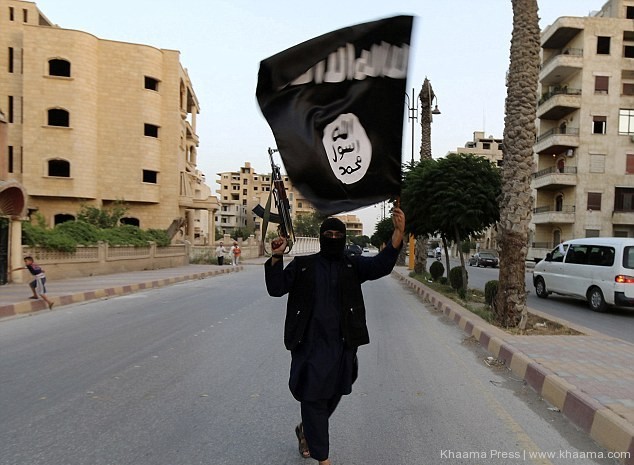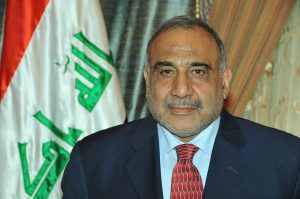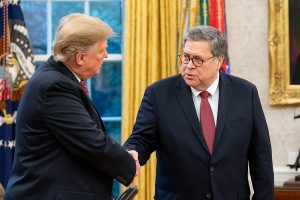By Shireen T. Hunter
The death of Abu Bakr al Baghdadi, the leader of the Islamic State (IS), is good news. However, it would be a mistake to think that his demise means the end of IS. Even if IS as an organization is dismantled, it will regroup under a different name and a different leadership. According to some reports, in August 2019, al-Baghdadi appointed Abdullah Gardash—a former Ba’athist officer and an ethnic Turkuman known for his extreme cruelty—as his successor. The experience of other extremist groups, including al-Qaeda and its various local branches, also indicate that the death of the leader of an organization does not necessarily result in the end of the organization itself. The best way to assess the chances of either resurgence of IS or the spawning of new terror groups modeled after it is to inquire into the causes of the emergence of these particular types of groups in the last four decades.
The rise of Sunni extremist and Shia revolutionary ideologies
Beginning as early as the mid-1960s, Saudi Arabia systematically began to spread its version of Wahhabi Islam in the Sunni world, including South Asia, as an instrument of its foreign policy and a tool for expanding its regional and international influence.
The Saudi Islam, unlike other Sunni schools, especially the Hanafi Islam, is highly intolerant and views those Muslims, especially the Shias, who do not subscribe to its tenets as heretics and therefore deserving of death. It cannot be denied that the spread of this type of Islam has greatly contributed to the rise of groups such as the Taliban, al-Qaeda and its various local branches, Boko Haram, al-Shabab, and IS.
Meanwhile, after the 1979 Islamic revolution in Iran, a politicized and revolutionary version of Shia Islam emerged with highly negative attitude towards conservative Arab regimes, most notably Saudi Arabia. This revolutionary version of Shiism challenged the legitimacy of these states and intensified their fears. It also added a sectarian dimension to traditional animosities and rivalries. The simultaneous emergence of these trends caused a deep ideological rift within Islam, later linked to more mundane power struggles and rivalries for influence.
Cold War politics and the Soviet-Afghan War (1979-1989)
The Soviet -Afghan War and the American and Arab assistance to the Afghan Mojahedin, coupled with the acceleration of Wahhabi proselytizing in Afghanistan and Pakistan, provided the breeding ground for the rise of Sunni extremist groups from Al Qaeda to its various off springs in the Middle East, North Africa and the North Caucasus. For example, the so-called Afghan Arabs, nurtured in the crucible of Afghan-Soviet war, were a major player in the more than decade-long Chechen War. Although the Soviet-Afghan War ended in 1989, regional and international competition over deciding the fate of Afghanistan continued and significantly contributed to the outbreak of civil war beginning in 1989 that even after the 2001 American invasion is continuing.
State manipulation of terror groups as instrument of foreign policy
All states claim that they are against terrorism and that they are fighting terrorist groups. The sad truth is that this is not the case. All states, and not just the so-called rogue or outlaw states, use such groups to achieve their own political and strategic goals. Only when these groups become unruly and pursue their own independent agendas that states turn against them.
A good example is the case of the Taliban. It is generally accepted that beginning in 1994, the United States, Saudi Arabia, later joined by the United Arab Emirates, and Pakistan nurtured the Taliban as an instrument of preventing Iranian presence in Afghanistan and Central Asia as well as limiting Russian influence. For a long time, the U.S. closed its eyes to the atrocities of the Taliban, including its methods of dispensing justice and treating women.
Afghanistan, meanwhile, became a haven for al-Qaeda. Only after the 1998 bombings of American embassies in Kenya and Dar al Salam did the U.S. attitude change. Meanwhile, Saudi Arabia and Pakistan continued to use the Taliban for their regional goals even after 2001 U.S. invasion of Afghanistan. Their policies has been one reason for the Taliban’s longevity.
The emergence of IS was also closely linked to the rivalries over the shaping of Iraq’s post- 2003 invasion political structure and to efforts to counter Tehran’s influence. By the same token, Iran has used groups such as the Hezbollah and some Iraqi Shia militia, that other players see as terrorist, for the advancement of its own regional ambitions.
Military interventions and the collapse of internal and regional orders
The rise of terrorist groups has also been directly related to foreign interventions and regional wars. These interventions have dismantled state structures in several Middle East and South Asian countries, unleashed dormant ethnic and sectarian tensions and, by altering regional balances of powers, have intensified regional rivalries. These developments have provided breeding grounds for the emergence of new terror groups often supported by external actors.
The Soviet invasion of Afghanistan led to the civil war that engulfed the country after the Soviet withdrawal in 1989. The civil war that followed after the end of the Soviet-Afghan war led to the emergence of new radical groups such as the Taliban with the help of regional and international players as they tried to determine its outcome. The Israeli invasion of Lebanon in 1982 prompted by its desire to get rid of the Palestine Liberation Organization gave birth to the Hezbollah. The 2003 American invasion of Iraq both dismantled the Iraqi state system and caused an intense regional rivalry to determine the fate of the Post-war Iraqi state and the nature of its foreign relations. The emergence of groups such as al-Qaeda Iraq and later IS were a direct result of these domestic and regional rivalries. Regional countries such as Saudi Arabia, Qatar, and Turkey initially supported IS. The Syrian Civil War, helped and abetted by outside players, meanwhile, extended the field of al-Qaeda and IS operations to the Levant. The same is true of Libya.
These military interventions were partly rationalized in terms of fighting terrorism. Thus, ironically, the “War on Terror” became the catalyst for the emergence of new terrorist groups. Terror groups are the product of deep-seated economic and political grievances as well as radical ideologies of secular or religious variety, plus the manipulative policies of key regional and international actors. As a long as these causes are not addressed, the pursuit of maximalist goals by key actors are not stopped and the solution to terrorism and terrorists is sought solely by the use of military force and the total subjugation of the enemy of the moment, we will see more terror groups coming to the fore and clones of al-Baghdadi emerging.






As the original story was being said about 17 years ago, Baghdadi was a teacher and an anti-war activist before being captured and put in jail along with the other 20,000 well trained Sunni military personnel belonging to Saddam army during the invasion of Iraq by GWB in 2003. In prison, since Baghdadi was a charismatic speaker he became a Sunni preacher inspiring the military officers in prison. Then due to mishandling of the post invasion by the invaders, specifically by Bremer the US Rep in Iraq, all the prisoners were let go free.
Ms Shireen Hunter is right by saying that, the elimination of Baghdadi doesn’t really mean a damn thing since today there are 20,000 or MORE well trained ISIS soldiers roaming around in Iraq, Levant and Syria all the way to the north or closed to the Syrian border with Turkey. Well the created Frankenstein is dead but the ideology is alive and well as it was the case with Al-Qaeda since BL was killed in Pakistan.
Monty Ahwazi
With the article by Ms Hunter we see a pattern, to exploit the vein about the ‘eternal muslim warriors’ threatening everybody everywhere. It could be either the Sunni Wahhabi/Salafi, or the ‘terrorist’ Iranian militias. The idea is to prolong the endless wars justifying the ‘eternal presence’ of the savior, the U.S. Before there were the Communist, remember Reagan, then the ‘yellow’ threat… Now, for any new ISIS threat, the warriors need resources, weaponry, transport, ideally lines of Toyotas good for the ‘victorious’ pictures, and money. We know all of this might only come from Saudi Arabia, Turkey or the U.S.
JOSE RAYMOND HERRERA,
This Republic has been founded based on capitalists idealism. From its behavior it is inferred that she can not survive without having a enemy at any time since inception. The evidences in support of this claim can be discovered and or proven in having over 200 wars with the real, fake and or both enemies for the past 232 years. Did the founders of this Republic meant to design it as such or the Republic has evolved into what it is today?